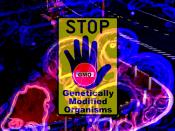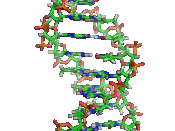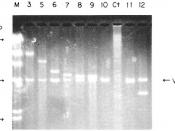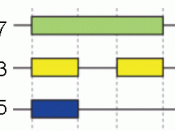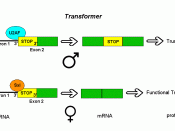Zachary Diaco Period 3 February 8, 2002 Biology Gene Splicing There are many different uses for the newly improved gene splicing. Scientists are now finding ways to clean or cure things that were never thought possible.
Transgenic organs are one of the newly discovered possibilities of gene splicing. There is a certain gene in your DNA that tells a human that they are human. There is also a gene in a pig's DNA that tells a pig it's a pig. Scientists have found a way to use gene splicing, to splice the two genes together. They then created a pig embryo with the human gene, so the pig thinks it's a human. So, since the world is having a struggle for organs, we can now take the organs from the genetically modified pig, and transplant them into a human body. Normally, the human body would reject these organs and the person would die.
However, since the genes match up to be human genes, the human body does not reject the organs. With this knowledge, there will never be organ shortage again.
There also been new discoveries with bacteria. When a huge oil tanker spills all of its oil into the ocean, we have heard disastrous things that happen. Birds and sea animals die from being intoxicated, birds can't fly, animals lose sight, and many more horrible things. Scientists have genetically spliced a gene into bacteria that targets what it feeds on. The gene they spliced in genetically modified the bacteria to feed on oil. So when we have a gigantic oil spill, we can pour millions of these bacteria onto the oil spill and the oil will be cleared out within hours.
Scientists have also found a way to make the ultimate crops. When farmers have rows of crops, but they have to harvest them before they die, they aren't making money throughout the whole winter. With the new knowledge we have from gene splicing, we can now have crops that have enhanced flavor and quality, delayed ripening, insect resistance, and herbicide resistance. There has been a case where scientists have spliced a fish gene with a tomato gene that makes the tomato completely resistant to frost. So, with this knowledge, not only can we have crops all year, but enhanced crops all year. Scientist can also make food non-allergenic. So if a kid is allergic to peanuts, they genetically splice the peanuts to not have the allergenic qualities that the kid's body rejects. They can make foods with enhanced vitamins and minerals now, as well.
Scientist also use gene splicing for the study of evolution. Scientists have known for centuries that animals and people, in some cases, adapt to their environment for survival. But the question is, how? Scientist use gene splicing to actually figure out how people and animals of the later generations got the new traits and characteristics they did. They also use it to actually figure out the science behind Darwin's theory of evolution and things like that. They also use gene splicing to learn about genetic evolution, and how cells evolve and build resistance to unknown substances.
Scientists can also use gene splicing to fix genes that cause genetic diseases. They splice genes with certain immunizations or antibiotics, with the genes lacking normality or have a certain viral infection. This causes the bad genes to be eliminated, or have a massive decrease in population. One day scientists will be able to totally knock out genetic diseases with gene splicing. Scientists have also tried to use gene splicing to create immunizations or vaccines to cure or prevent disease that we haven't been able to prevented yet.
Gene splicing will be a primary cure for a bad genetic makeup some day and scientists will be able to totally dismantle a genetic disease. We will have more nutritious food, less natural disasters, and we will never have to suffer from the lack of an organ donor. Gene splicing is definitely looking up for the future, but when will they perfect it? Hopefully they will perfect it soon, so many lives can be saved, and many hearts will not be broken.
Work Cited 1) www.eurekalert.org/pub_releases/lai-1-4-02.html 2) www.parkinson.org/frontline.htm 3) www.rediff.com/news/2001/apr/07spec.htm 4) www.nuffeildbioethics.org 5) www.pub45.ezboard.com/fmindfulwisdomfrm14.showmessage?topicID.157.topic 6) http://mcb.berkely.edu/faculty/GEN/riod.html 7) www.acsh.org/publications/booklets/biotechnology2000.
8) www.hhmi.org/GeneticTrail/Front/bagt.pdf
